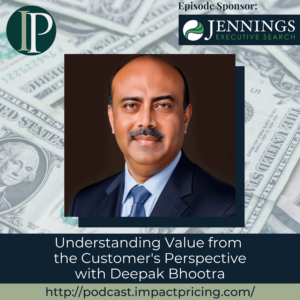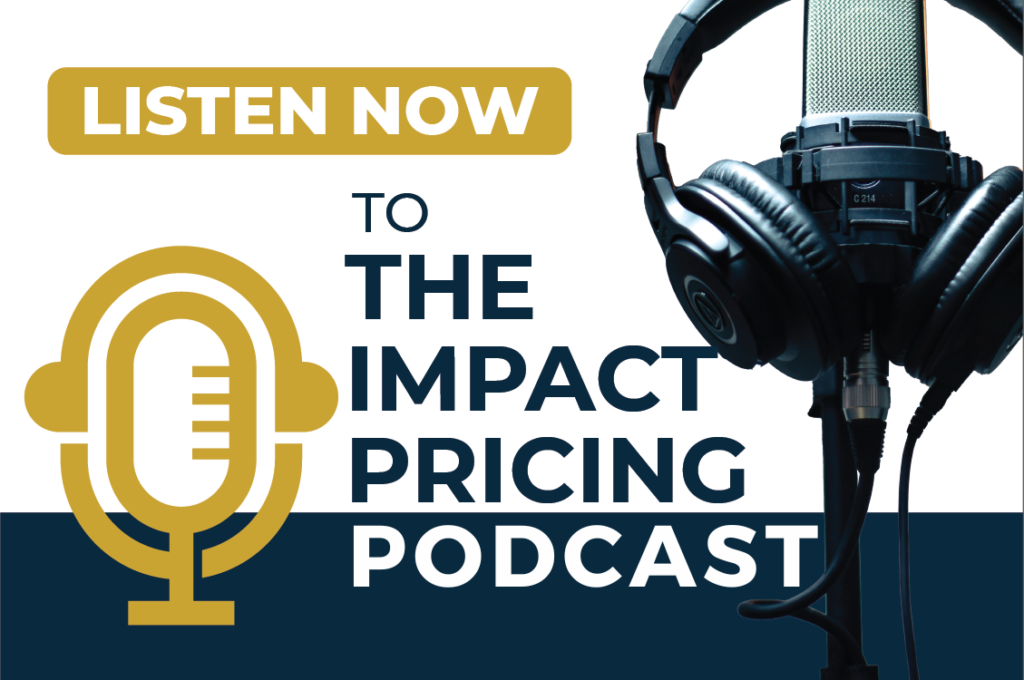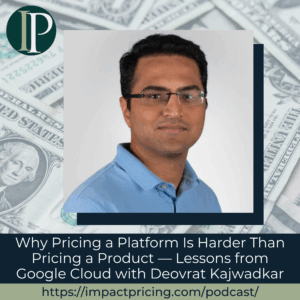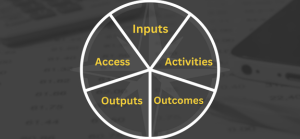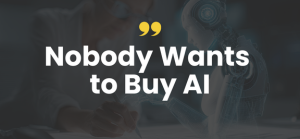Deepak Bhootra is the CEO of Jabulani Consulting, with over 19 years of experience in the tech industry, including significant roles at Hewlett Packard and Sun Microsystems. Deepak has a deep understanding of pricing strategies and their impact on sales performance. He is passionate about helping organizations navigate the complexities of pricing and sales operations.
In this episode, Deepak shares his journey into pricing and sales, discussing the cultural nuances of negotiation in India and how they influence pricing strategies. Together, they explore the challenges salespeople face with pricing, the importance of understanding value from the customer’s perspective, and how AI can play a role in pricing strategies.
Podcast: Play in new window | Download
Why you have to check out today’s podcast:
- Discover the common pitfalls salespeople face when discussing pricing.
- Explore the importance of aligning pricing with customer value and the psychological aspects of pricing.
- Learn how AI can enhance pricing strategies and sales effectiveness.
“Pricing is something that companies use to control sales behavior. Salespeople don’t like to be controlled.”
– Deepak Bhootra
Topics Covered:
01:46 – Deepak introduces himself and shares his background in pricing.
03:10 – The cultural significance of negotiation in India and its impact on pricing.
07:44 – The relationship between sales and pricing and the challenges salespeople face.
14:21 – Discussion on the emotional aspects of pricing and how they affect sales decisions.
17:12 – Insights into the importance of understanding value from the customer’s perspective.
23:09 – The role of AI in enhancing pricing strategies and sales effectiveness.
30:35 – Deepak’s pricing advice.
33:18 – Connect with Deepak.
Key Takeaways:
“Salespeople need to understand the value of pricing and how it relates to customer perception.” – Deepak Bhootra
“Value is in the eye of the beholder. Understand what the customer values before discussing pricing.” – Deepak Bhootra
“When you ask a budget question right up front, you’re actually setting yourself up for a pricing discussion.” – Deepak Bhootra
“Pricing is one of those conversations where you have complete control of your CRM updates, you have complete control over your forecast, your relationship, but you do not have control over the price because someone else dictates the price.” – Deepak Bhootra
“When you are looking at price, giving a discount is the easiest lever to pull right up front. And typically (salespeople) they do it because they can also bamboozle you with a lot of stuff. ” – Deepak Bhootra
People/Resources Mentioned:
- Jabulani Consulting: https://jabulaniconsulting.com
- Amartya Sen: https://en.wikipedia.org/wiki/Amartya_Sen
Connect with Deepak Bhootra:
- LinkedIn: https://www.linkedin.com/in/deepakbhootra/
- Email: [email protected]
Connect with Mark Stiving:
- LinkedIn: https://www.linkedin.com/in/stiving/
- Email: [email protected]
Full Interview Transcript
(Note: This transcript was created with an AI transcription service. Please forgive any transcription or grammatical errors. We probably sounded better in real life.)
Deepak Bhootra
Get to the fundamentals of value. Look at value from the eyes of the beholder. And this is an old Deming phrase, right? He said, quality is in the eye of the beholder. And that just fascinated me because I thought he nailed it. That’s the universal truth.
[Intro / Ad]
Mark Stiving
Welcome to Impact Pricing, the podcast where we discuss pricing, value, and the less-than-obvious relationship between them. I’m Mark Stiving, and I run boot camps to help companies get paid more. Our guest today is Deepak Bhootra.
Here are three things you want to know about Deepak before we start. He is the CEO of I didn’t ask him how to say this, Jabulani Consulting. We’ll see if that was close.
Deepak Bhootra
You nailed it. You nailed it.
Mark Stiving
He did 12 years at Hewlett Packard and seven years at Sun, two companies that I have a fondness for. So welcome, Deepak.
Deepak Bhootra
Thank you for that excellent introduction, Mark. You got my name right. You got my company name right. What more can I ask for? I’m excited to be here.
Mark Stiving
It’s all downhill from here.
So how did you get into pricing?
Deepak Bhootra
Well, you know, Mark, that’s an interesting question. Most Indians at birth get into pricing because that’s the first thing that we taught, right? “Ah, so you’re going to grow up to be an engineer because engineers earn more,” so there’s more money to be made.
So I come from a merchant family. I watched my granddad run his business. Pricing was fundamental, right? You sell at an X value, you get an X cost. Therefore, the delta between that is your profit. So that was the mindset from birth itself, that selling and pricing are two equations that you need to think about all the time.
Now, did I get into it because of that? At the same time, my dad was a medical doctor. I didn’t become a medical doctor, right? So I went into commerce, as we call it, for simple reasons. I loved the thrill. I got into sales. I fell in love with sales. I did business development sales, pre-sales, and then I got into pricing because I went into sales operations.
And I got into pricing-predictive analytics, pricing models, looking at pricing, how do we scale. And pricing has a huge impact in terms of margins, cashflow, and it’s a powerful subject and topic to talk about.
And to be honest with you, a subject that I really felt salespeople need a lot of help with, just because of the complexity of the topic and the emotions associated with it.
Mark Stiving
I couldn’t agree more.
But before we jump into talking about sales and pricing, I want to ask a question about India, since this is in your blood. I’ve always heard that it’s true that Indians negotiate for almost everything when you’re in India.
Is that a true statement?
Deepak Bhootra
The way to answer that is as follows. Yes, that’s the straightforward answer to it.
There’s also a book by Amartya Sen. I think he was an economist. He still is alive, I hope. I don’t know. It’s called The Argumentative Indian. The book actually doesn’t talk about any philosophical underpinnings of why Indians argue or debate so much. But the reality is that, think of it as a Socratic method, right? Certain cultures imbibe a notion of engagement. So you have the social element to it, but then you also have the element of, I really want to know more, or I have an opinion.
And I think that I want to be cautious how I say this, but opinionated is the right word. There’s an opinion that needs to be shared. Therefore, there is a pretense of a conversation, but the conversation is actually there to any social, you’re building social class and social conversation at the same time. So it’s just part of the thing.
Everything is a negotiation because everyone wants to feel that we’ve had a battle.
Life is tough. If you look at India, I had a foreign colleague who came to India and he said to me, I love India. It’s organized chaos. That word stuck with me.
When you have everything that’s organized chaos, you’re going to have a psyche. Everyone is fighting the uphill battle. Just to give an example, your meeting is two kilometers away from your office.
And Mark, no one tells you how the distance, people tell you the time, because that’s what traffic does to you. And when you’re coming from that environment where survival is a very basic thing of life, you tend to question a lot.
And two, it’s a commercial battlefield. India is a land of small business as well, right?
And when you’ve got competition, you typically enter a market, you’ve got five stores next to each other selling exactly the same thing. You end up trying to add value.
So instead of giving a discount, as my granddad would argue, why are you giving a discount? I would rather tell the guy, okay, you know what, I’ll deliver the product to your home for free. He says, that’s how you do business.
So this is what comes out of it. And for that, you need to have negotiation tactics. And that’s why you have this spillover into how people approach or how people talk on those types of things. It’s just it, it’s a little bit of argument, it’s a little bit of,
And two, of course, the cultural significance. When religion permeates your environment to such a degree, everything becomes philosophical. What’s the purpose of life? Why are we on this planet? So you tend to bring that into every conversation.
And to be honest with you, if you get a deal where you just win it, Mark, people are going to tell you, well, I don’t like that. But Mark, you and I did not have a discussion.
Mark, no, this is not good. How can you say yes? Let’s argue a bit. It’s one of those.
Mark Stiving
I have to share a really quick story. So I was in India with a CEO of a company I was working with and he happened to be Indian and raised in India.
And we’re about to take one of those little three wheeled cars back to our hotel. And he goes over and talks to the guy and he goes, no, too expensive. And he walks away. And then, then the guy comes up and says, well, how about this?
And they’re negotiating and we get in the car. And I said, so how much is this ride? And he goes, 75 cents. And I was like, you were negotiating over 75 cents?
Deepak Bhootra
Because he would not be able to digest his food later on because his bile didn’t get worked up. Mark, I have relatives who will take me out for lunch, spend a thousand rupees on a pizza, and I’m saying that because it’s a non-Indian dish, right? It’s a foreign product.
Walk outside, and then the auto rickshaw guy or the tuk-tuk guy says to them, 100 rupees. And this is the typical reaction. What? Do I look like I’m stupid? I wasn’t born yesterday. Okay. I do this trip every day for 50 bucks.
That man who’s got most likely a family at home. I’ve always told my family, give him the hundred bucks. Compared to the thousand bucks you threw, that 50 bucks is going to go into his pocket. You’ll get goodwill. You’re actually feeding a family.
Whereas when you bought a thousand dollar pizza, you made Domino’s richer. You made pizza richer. But that mind shift is amazing. The guys will go and argue for the 300 rupee coffee, will not argue, the 300 rupee cup of Starbucks latte.
But the trip back home becomes a massive debate. And then the same philosophy even with the little vegetable seller. Guy, sitting on the ground, most likely struggling to make ends meet, and people will argue with him on, no, no, no, no, no, I will not buy 12, I want 13, give me one free. It’s just weird, but that’s just the DNA.
And honestly, if my family doesn’t do it, I actually stop back and get surprised. That’s odd. She took the price at face value. Are you feeling well? Are you okay?
Mark Stiving
Okay, so this is a great lead-in into salespeople and pricing, because salespeople tend to want to give away price too quickly, too easily.
And so let’s just – let me toss that softball out to you, and what do you think about that as a general sales philosophy?
Deepak Bhootra
General, right? So there is, let me start with the good guys. There’s at least, I would say 10% of the salespeople that understand the value of price and understand the relationship with price.
The reality though, is that the sales function is marked what I call one of the most vicious on the planet. This is a function where even if your both legs are broken, you’re going to still drag yourself to and not ask for help. Why?
Because there’s a sense of bravado. Now, when you have bravado, you also don’t like pricing becomes one of those conversations where, how do you say it? I control pricing because I control the relationship. That’s a fundamentally flawed approach. I don’t understand that, but a lot of sales people argue with it.
Now let’s look at that majority that you spoke about and their relationship with pricing. In their opinion, one, pricing is a black box. but they have no clue why the company wants to do something because no one’s actually explained that to them.
Two, pricing is also one of those things, and depending on the culture or the background, it also becomes one of those, how do you say this? What’s your budget is one of the favorite questions, right?
When you ask a budget question right up front, you’re actually setting yourself up for a pricing discussion. It’s going to happen because budget is one side of the coin. The other side is, you’re going to get to it quick.
So pricing is one of those conversations where you have complete control of your CRM updates, you have complete control over your forecast, your relationship, but you do not have control over the price because someone else dictates the price.
Typically with price, the guys always find themselves at a loss because they don’t have the right vocabulary to explain the price. There are complex models. People build out total cost of ownership models and so on. But in general, salespeople also are given, how do you say this, very little leeway, right? Empowerment-wise, they can give certain amounts of discount away, and typically many of them do give it away.
In fact, I would argue 100% of salespeople will typically go to the floor max immediately that’s available to them. The rest, you know, we did a lot of analysis. And if you look at the way that salespeople in general handle pricing, I would say less than 10% of the guys are actually pushing the envelope in terms of understanding, not just budget, but also the strategy considerations.
There are many salespeople who actually, I committed to bring this deal on Friday.
So therefore I hook or crook, I need to get it because my reputation is on the line. That’s sheer bravado.
So pricing there becomes something that keeps the momentum going. You’re more interested in your paycheck. You’re more interested in whether you are a hundred percent or whether you’re going to close at 200%.
You’re not interested in what’s right for the customer, what’s right for the company.
To me, that’s the genesis of it right there. Pricing is something that companies use to control sales behavior. Salespeople don’t like to be controlled. So companies, and I’m not even getting into AI or predictive analytics and so on, because that’s another discussion that we can have there.
But that’s in general. Salespeople don’t appreciate the pricing conversation because it’s a conversation that they’re not geared for. They can’t emotionally relate to it. And there’s always head trash that they bring into the conversation.
Mark Stiving
So far be it for me to want to take the salesperson side, but I feel like I have to in this conversation. So, so price is just one of many different levers I have to pull. And so why wouldn’t I use that lever?
Deepak Bhootra
Because it’s the easiest lever to pull.
When you are looking at price, as an example, right? Giving a discount is actually the easiest lever to pull right up front. And typically they do it because they can also bamboozle you with a lot of stuff.
Now, at the end of the day, I’m a sales guy and I’m telling you the tricks that I would use. If you go back and I’ve looked at the data, at any deal where the salesperson has asked for additional discount and the business case is typically big things such as, oh, because IBM is in that account and they’re making very, very aggressive moves.
What does that even mean? It’s like saying, I walk into a bar and there are some people there, and all of them are looking at the same bottle of alcohol, therefore I can predict that I need to therefore do something different.
And I’m like, okay, I get it. So on the other side, there is a reality there, and that is that you can bring in all the best tools, you can bring in all the best maths, but there’s a lot of subjectivity in B2B selling, which I do concede.
And that subjectivity is I think what you’re alluding to. I always tell people that if I could implant a little sensor into how a salesperson thinks and every conversation that he’s in, I would actually realize that he’s actually got a very difficult job. He is sensing a lot of information that no AI can pick up. We have a situation where you can put transcripts into an AI and let the AI tell you what’s happening with tonality and pitch and so on. Absolutely, do it.
But as a salesperson, I’ll give a simple example of where subjectivity comes in.
You’re sitting with a customer and the customer says to you, I have a dual vendor strategy. and guys whether you and that’s it so i will always buy from two vendors because I want to keep you both on your same feed that actually is a dead giveaway that your customer is most likely going to run the judicious procurement process and whether you like it or not you can flip as many coins as you want at the end of three years you’ll both be at 50 percent of the share.Why? Because that’s how he’s going to make the cookie break that’s exactly what’s going to happen.
Mark Stiving
Or maybe, I used to find that it may be a 30-70 rule, right? Where whoever gives them a few pennies less gets the 70, but you know.
Deepak Bhootra
But over time, in general, with large organizations and enterprise level, Mark, I have found that the procurement guys, mathematically, I’m going to be very quiet as to how it happens. It’s not random. You cannot convince me that it’s fairly, it’s actually structured.
You’ll either end up at 70-30, as you put it, because they want to keep some element of majority, whatever, but it’s typically going to end up with 50. And it was so weird.
You can actually predict who’s going to win the next bid based on certain variables. You just know. And I wish I could take the same logic and thought process and go to a slot machine in Vegas and stand next to it instead of feeling the heat of the machine, use some other logic to win. It’s one of those things, but so that objectivity is, the one that I look at salespersons to give me, right. He’s having a conversation.
There is something that comes up in terms of compelling event. Those are the nuggets of information that allow subjectivity to be brought into the equation, but with limit.
Just giving discounts. My ex-boss was amazing, Mark. This is how he used to explain discounting.
He would physically take a hundred dollar bill out of his pocket. And he would look at someone and say, Roger, every time I asked for a discount without a business case or any logic to it, he actually would tear a hundred dollar bill.
And for the Indian sitting in the room, that is like, no, it just, that’s, but there was a message he was making. The amount of time that I put into tearing this. thoughtless is exactly the thoughtless ideas you guys do when you’re giving discounting.
He said, I’ve never seen you guys fight back or actually position it because it’s the least barrier and it’s a barrier that you just hop over very easily. That was his way of giving a jolting message to people.
Your subjectivity has to be attuned and enhanced.
Mark Stiving
Okay. So the really important question is how do you keep salespeople from doing that?
Deepak Bhootra
I’m going to give you a very simple answer. I think you need to be very clear on what they can or they cannot do. Many salespeople are told what they cannot do, but they’re never told what they can do.
If you focus on the can-do element and it’s around what type of conversation do you need to have upfront.
Two, there’s a lot of head trash. Believe it or not, I’m coaching a lot of rockstar salespeople and Mark, half of them actually don’t believe in the product or don’t believe in the price. They actually believe the price is too high. When you’re starting a conversation with that belief in your mind, it becomes a self-fulfilling prophecy.
So my request to companies is to actually stop with all the science and the data science behind pricing. That’s awesome.
But also look at the behavioral aspects of what’s happening to the salesperson. What is going through his mind and why he’s positioning price the way he’s positioning.
If he doesn’t believe in your product, if he doesn’t believe that the price is right, price is too high, You can give him as much literature as you want, you can give him as much decision support, material information, visualizations, but there’s something that he’s going to say or do when he’s doing that belly-to-belly selling experience. Watch out for that.
The most important thing for me is that I’ve been in predictive analytics for ages. The way that we do change management, salespeople will accept a CRM because the CRM can’t compete with them. But the pricing engine will compete with them.
And when you’re telling someone that, hey, I pay you a lot of money and you drive a Mercedes Benz, but guess what? I don’t trust you.
I’m going to give you a price or a range of pricing that I need you to offer because we know better. You’re already on the back foot with salespeople.
And the best salespeople actually spend a lot of time understanding the genesis of the price, understanding what differentiates them, and then they focus on that.
The point now is how does a company take what they can do with 10% of the top guys and do it with the rest of the 90%? And that’s when you’re going to realize that there’s a middle, I would say 40% of guys that have a lot of head trash that needs to be cleaned out around pricing.
Very easy, very quick, low, quick skips sliding into slippery slope also, right? You give discounting once, you’re going to give discounting again and again and again.
So we really need to have an active conversation around that. And the last point that I’ll make is the best sales leaders who have got pricing to the right level, where they have tool and human working hand in hand, are the guys that have changed their coaching methodology mark.
These are people that don’t discuss discounting, they actually discuss value. And every conversation is very different. They structure the conversation in a very different way. And those are the guys that I think are the rock stars.
And I would love to actually dig into some of those brains and say, here’s a pricing perspective on how sales coaching can actually change the psyche or the approach that a salesperson takes, because I’ve seen the power of those conversations.
Mark Stiving
Nice. So I have to say, first off, my third book was called Selling Value. So I wrote that all about value.
And I was surprised that you hadn’t said the word value until just now. And it’s like, oh, finally, he says the word value.
So what does value mean? And how is it that a salesperson sells value? How do we teach a salesperson to sell value?
Deepak Bhootra
Here’s the problem with value. All our ROI models, TCO models, take the perspective of us selling to someone, right?
My simple philosophy is that value is in the eye of the beholder. You can have the best ROI model, but if that ROI model is not understood, absorbed, or if the guy believes that,” Ah, that’s all good, but that’s not critical to me. I am going to evaluate your product only on these criteria”
So I always look at it and I always tell the sales guys that if you are talking to a customer and if you’re having this conversation, establish right up front what is value from their point of view, not value from your point of view.
So as an example, I was just working with an organization that sells into the US federal government defense sector and this is the pricing model. Their argument is we will beat any price from any of the established competition because we are the cheapest. And therefore we are the cheapest. That means that for every dollar you spend with us, you by default have saved at least $2 because we are one third cheaper than the rest.
And I just sat there completely flummoxed. And my question to them was, why are you not taking the $3 then? Jack your price up. Why are you leaving that price behind?
Because what you’re doing is very interesting, but I don’t understand. And why not maybe offer more services? What’s the thought process behind that?
So their value proposition is very simple. We are the cheapest on the market and we’re proud of it. And they just broke $10 million in revenue.
And I was like very impressed with that. But the problem I’m seeing is their performance is very chunky. How are you going to get consistency?
So value to me, eye of the beholder, very early in the discovery process, actually understand what do the various stakeholders want, the value of definition, what is the value definition, get that right. It’s not your TCO perspective, that’s your perspective. What does the customer want?
I’ve dealt with CFOs and I’ve gone to them with a complex ROI model, but you know what he says to me? Very simple. He says, “I’m tired of salespeople beating on my door every day, screaming and shouting at me. The value of this system is that I want to get less noise and more work done.” There goes my ROI model.
He’s actually looking for something different. So my model should have actually positioned value differently. It would have said 17%, 100 opportunities or 100, let’s say compensation or commission payments that you do, 17 lead to a dispute.
Those 17 disputes lead to six calls to you. And the value to him is that those six calls are now going to become one. I’m going to have more engaged salespeople and I’m going to have less leakage because I’m now having this dispute and claim mechanism and then the guys can sell more. And my relationship with my peers in sales will improve because right now people are slashing my tires. They are, you know, scratching my car, stuff like that. So value is a very, very powerful term. It can be an ROI. It can be a soft benefit quantified.
At the end of the day, one of the things that I’ve always realized is that people will first buy an emotion and then they will justify with logic till the cows come home. They will tell you about all the models and everything, but there’s something that just click.
Either he saw his promotion that’s going to happen because of this project, or he got comfort that you will do it better than what the other guys have done. Therefore, he sees success already and he’s ready to move, take the next step because you’ve de-risked it for him. So that is another value element, risk.
Mark Stiving
Yeah. So I want to push back a little bit on the emotion versus logic conversation. But by the way, I don’t disagree with that at all. I think that in the B2C world, that’s 100 percent true. Right. I think in B2B, companies try really hard to put processes in place so they can get that emotion out of the decision. So we have buying committees.
We have RFPs we put out. So we do a bunch of different things as a company so that I could get rid of that emotional decision-making part. And so we often see it less in B2B, but we still do see it. It’s still a role, there’s no doubt.
Deepak Bhootra
Sure, there is.
And look, at the end of the day, there’s a rubric that governs everything, right? People get a score out of it. So yes, you’re right. But at the end of the day, the decision was, what was the price that you published and how did you publish that value?
So that was approach I took. But at the end of the day, if rubric determines how you position things as well, and if the rubric clearly states, that price value relationship is 50% of the weightage, then heck, you’re going to spend 50% of your time on that specific element to make sure, if not 100% of your time, because you can win all the rest, but you’re going to lose the deal, because that 50%, you’re literally tossing a coin. The single variable that’s going to make the success is price value. And I’ve seen that, I’ve seen that.
And there are certain RFPs which will actually give you 5% for, this 10% for that, but then suddenly there’ll be this big chunk, which is around ROI. Tell us, and then they give you their templates because they want to compare. So that rubric will actually dictate to you how you need to publish back also.
So you’re right. There’s a limit to how much value, what’s value in the eye of the beholder. How do you do that? And that’s typically where the conversation comes in.
Now, if you’re having a conversation against an RFP and you’ve never spoken to the customer before, I’ve got enough data that tells me you’re not going to win that RFP anyway.
Mark Stiving
Yeah, just don’t even bother.
Deepak Bhootra
It’s always the time. And they do bother because there’s another subjectivity that comes in.
And this is the same mouth or the same brain that also gives you subjective pricing. They’re going to tell you as follows. If we don’t have a presence at the table, they will not give us the next RFP. I kid you not, that is 80% of the time why people respond to an RFP that they know they’re not going to win.
Because if we don’t play and put the money on the table, we won’t be invited to the next party.
And that is an astounding statement because I’ve never seen how true or how fake that is because in two years, everyone changes anyway, right?
Company buyer changes, the sales person changes and so on.
Mark Stiving
And not only that, if you’re not in early on the next one, you’re going to lose that one, too.
Deepak Bhootra
So this is the whole subjectivity debate that comes back to it, right? I believe that at least the top guys, their subjective analysis is pretty cool. They’re also using the same logic on all variables, including pricing.
These are guys that actually lead with value. They make it very clear. I am asking for more money. Yes, I know that. And this is why I’m asking for money. They’re actually pretty clear on that.
Mark Stiving
Okay, Deepak, before we move on, because we’ve only got a few more minutes left, I want to just ask about AI. So how are you using AI? How are salespeople seeing AI? Tell me about AI in your world.
Deepak Bhootra
So, AI in the B2B sales world is pretty hectic. It’s also what I call low-hanging fruit. AI has come in and has actually allowed people to get better in terms of gathering, assimilating information, personalizing a lot of work that they do.
And that’s why it’s called a language model, right? Because it’s actually helped you with all this verbiage, streamlining and the ability to do that research.
There’s no ways that you can convince me that a salesperson can remember that he has 30 accounts. He sold 700 deals in the last five years and he can remember the price points for all of that. Absolutely not.
So for me, there’s a difference. There’s a basic mathematical and statistical models that can help you get good. Then there’s also AI, which is now interpreting for you and actually telling you what it thinks you should be doing.
And I think that’s still a challenge. People will take the low-hanging stuff. AI tells me that I should write my direct message in LinkedIn as follows. Cool, let’s do it.
But when AI tells the same person that, hey, we looked at the last seven deals you did, and we feel that there was a willingness-to-pay element that you missed out on.
We feel that this custom based on this characteristic made up 83% more. Sales guys are going to look at that and say, are you telling me how to teach?
And I think that’s where AI is going to struggle until we get to a point where it’s not a competing mechanism, but it’s a complementary mechanism.
And some of the latest stuff that I’m really, really watching with an eye out is where the AI is actually following the salesperson’s behavior as shown in the deals before. then looking at how he approached those price points in prior, how he won those, then looks at the maximization point and then tells him, by the way, these were the characteristics of how you priced in the past.
Would you like to experiment a bit differently this time with this one? And here’s why we suggest that.
Salespeople love that because one, it says, Hey, instead of giving you generic wisdom, I’m actually going to show you how you operate, show you that I actually understand you better. And because I understand you better, this is what I’m proposing. And to me, that’s the mind shift that AI can bring to the table, is suddenly instead of looking at AI as a, how do you say this? Something that’s been given to you by someone else. And the reason why I say this is because it’s something different this time you know when we give sales people excel.
We give them other tools it was ok but with a you know i have another nightmare.
The company has its own AI, but the sales guy has his own AI also. Bring your own AI is a big, big chaos for me.
So I just interviewed eight B2B sales reps and asked them the role of AI. None of them spoke about them using it for pricing.
Everyone spoke about using it for their emails, their DMs, for historical understanding of what’s happening to the customer. for looking at customer prior RFP responses and looking at places where they could improve further, doing a rubric matching with the content, stuff like that, is where the guy’s excelling.
Even down to listening into the transcript over six calls and then predicting where is the hesitation in the tone, this is where he won’t buy, but pricing didn’t feature very high yet. And my suspicion is because everyone’s congregating, water flows in the direction of least resistance. And I have a feeling that pricing is not there yet. It’s still a rock that stick a bit higher.
We’re going to get there and we’re going to get there very soon. And my take is that the sales guys that start using AI to analyze the past pricing behavior and then using it to predict future behavior are the guy that’s going to score because they’ll get a lot of good insight, but it’s their insight based on their data.
Mark Stiving
So, that’s actually interesting, Deepak, but I got to tell you, I’m a pricing expert and I don’t use AI for pricing.
I use AI to help me understand what value means to customers.
Now, to me, that’s pricing, right? I mean, that’s what drives pricing. But I never ask it, what should we do for pricing? I just use it to figure out value.
Deepak Bhootra
And I absolutely agree with you.
And I’m telling you, the eight B2B rockstars that I dealt with, who are all at 2x of the quota, none of them are using AI for value. Forget pricing. This is what they will typically use it for. Here is my competition. This is where the competition is strong. How do I position it?
No one actually says, this is how I’m pricing it. This is my ROI model. Please do a mapping and show me. Is my ROI model actually showing a 3x, 4x gain? What have I missed in the value proposition? What have I missed in terms of my positioning?
And then it says to it, compared to the positioning that I took for the last eight bids for similar size customers, is this bid likely to improve my win rate or not. No one’s asking those intelligent questions yet, because they are fully consumed asking the childish questions.
How do I write this DM? How do I write this email? What is the tone?
Another misuse of AI, which I really laughed about, was analyze this LinkedIn profile and tell me what are the DISC characteristics, so that when I’m talking to him in a room, I know how to handle him, which is awesome.
But at the end of the day, you are relying on the written word to tell you about a human being’s characteristics, that’s better done from one-on-one conversations.
From that, you can then assimilate. Now, to recall or record those conversations, then take it to AI, that’s another laziness that’s going to creep into the system. But I would say that, would I use AI for pricing? I don’t know what that means. I concede.
But I do know one thing. I like to analyze how I do pricing. I like to look at my past successes and see if there’s a pattern that I can figure out.
Look, to be honest with you, every time I’ve tried to look at past data, I’ve realized one thing.
So we did this huge project on ink margins, as an example, right? We have a categorized program, A, B, or C.
The A guys always get the highest discount, the B guys always get the second highest discount, the C guys always get the shittiest discount.
That’s just life. Now, so you would argue that if that’s the case, Deepak, then if I take the data and if I were to run a segment analysis on a cluster, you’re going to get three distinct clusters on a chart, right? I never got one. We ran it for 7-month data, we ran it for 7-year data, we ran it for 17-year data. Here’s the reality.
None of those clusters ever appeared because guess what was happening? The guys were pricing willy-nilly. Even though they knew that this guy is supposed to get, they were bleeding all over the place. And instead of having three distinct clusters at equidistant or some distance, which is what you think, right?
If one guy gets 40%, one guy gets 30%, one guy gets 20%, you would hypothesize that there’s three clusters distinct.
No, there was so much bleeding up and down, which was weird.Now, here comes someone telling me, we’re now going to model this data, which I see is horrendously wrong in any case, because it was based on human intervention to get to a price point. It requires a different intelligence to then contextualize it as to what would that image look like.
So that’s where we thought willingness to pay would really come in handy, where we now start pushing certain price points higher.
We had another problem. That also turned out to be a fallacy. There was so much emotional baggage behind that, that even that analysis told us that we got a problem.
I couldn’t figure out. I would see outliers that clearly told me that this guy should be willing to pay more because he’s getting a product on which other customers pay us more. But when you speak to the salesperson, that’s where subjectivity comes in.
He actually tells us, oh, but he has a good reason why not to. He has a triple vendor strategy. So therefore the chances of winning are lower in any case.
So if you go and muck around, you just give it to another vendor. Oh, okay. Or and you get multiple, multiple rationales as to why willingness to pay was failing so miserably. It has its virtue, I get it. As a model, it made us make a lot of strategic choices.
But at times, I just felt that the same data that you’re using has its own bias in it. You need to be very smart in removing that in it first.
Mark Stiving
Deepak, we have got to wrap this up. This has been fascinating. Final question for you. What’s one piece of pricing advice you would give our listeners that you think could have a big impact on their business?
Deepak Bhootra
To be honest with you, I would state as follows. First is, get to the fundamentals of value. Look at value from the eyes of the beholder. And this is an old Deming phrase, right? He said, quality is in the eye of the beholder. And that just fascinated me because I thought he nailed it.
That’s the universal truth. My value to my family is what they see. But if I were to go into a beauty competition, there’s no value in me anymore.
So it’s one of those things.
So salespeople, I would recommend that, and this is what the top rock stars do. They’re very good at mapping and looking at pain from a very customer point of view and then position their entire pitch around that. So their value is specific to that.
The value is not the cut and paste ROI models or the TCO model that simply state that, hey, this is your operational cost, this is how much you’re going to save. But they take the conversation to the next level.
And I would say that that frontier is one where I think AI can help you positioning your pitch, your focus very tightly. And two, use AI to actually second guess and question your own approach to things. That’s where I’m seeing tremendous value in the work that I’m doing. I must be honest with you, my impact is now 5x.
My wife tells me, did your consulting rate go up by 5X? The answer is not really because I could do that. But the reality is that the way that I use AI, I would argue nearly everyone out there is going to start using it. So you’re going to have the general uplift of knowledge and usage.
And the guys that are going to differentiate is the guys that are going to apply it in very unique use cases.
And I really believe that the value conversation that you and I are having Mark is a Absolutely brilliant one. So when I do value analysis in my coaching practice as an example, I’m actually asking myself, customer wants ABC.
How am I going to deliver ABC? What levers does ABC enable for him? And what are the things that I’m missing in my analysis?
Then.
I go back to the customer and say, by the way, while we do this, here are five or six more things I wanted to cascade or explain to you that are also going to happen. I request us to change the scope slightly so that we bring that value into this conversation as well. What do you think about that?
And he’s surprised because he thought he’s going to spend $10,000 to get 20,000 value.
And suddenly with AI and all the other transcripts and all the operating procedures that the human brain could not have deciphered, I now have the ability to actually show him something contextually different. In fact, one conversation that I just had led to a restructuring in the sales organization where they also moved in the customer success managers that were sitting in service delivery.
Eight of them were moved into sales because they suddenly realized that, wait a minute, we’ve been doing this wrong.
Our entire sales effort also has these guys, which are very critical to it, but we are tossing this half-baked idea or this project across.
How about bringing them in early upfront? That’s where I think analysis is going to change and value is going to change, sir.
Mark Stiving
Nice. Deepak, thank you so much for your time today. If anybody wants to contact you, how can they do that?
Deepak Bhootra
Well, don’t shout my name in the town square. I’m not that popular yet.
So, very simple, LinkedIn. That’s where I spend four hours a day. Reach out to me on LinkedIn, Deepak Bhootra. That’s it, pretty simple. I have a website. I created a personal one as well, deepakBhootra.com. Feel free to look at that as well, Mark.
That’s how you reach out to me. And I’m pretty good at my emails and stuff, but LinkedIn is a great place to start from.
Mark Stiving
We’ll have the URL for your LinkedIn page in the show notes. To our listeners, thank you for your time. If you enjoyed this, would you please leave us a rating and a review?
And then wanted to share with you Narbe Alexandrian, he’s founder and CEO of Define Capital, a software private equity firm, left the following review for me on LinkedIn. Thank you, Narbe.
I had the pleasure of working with Mark on a comprehensive pricing strategy review, and I can’t recommend him highly enough. From the outset, he took the time to deeply understand our business, our customers, and the unique dynamics of our industry. His insights were incredibly thoughtful, and his strategic approach was both data-driven and practical. The impact of his work has been outstanding. His recommendations have led to measurable improvements, and we’re already seeing the results.
Narbe, thank you very much. The check is in the mail, as always.
And finally, if you have any questions or comments about this podcast or your company wants to get paid more for the value you deliver, email me, mark at impactpricing.com. Now, go make an impact.
[Ad / Outro]


